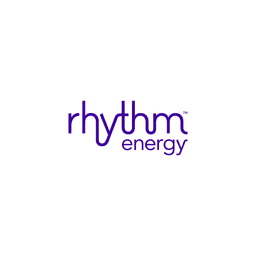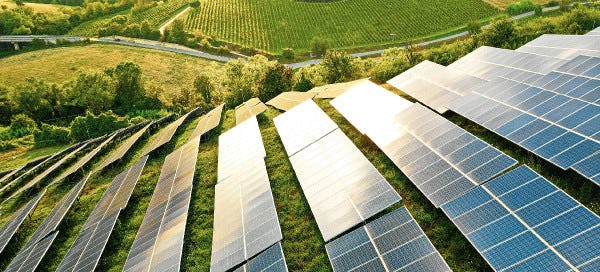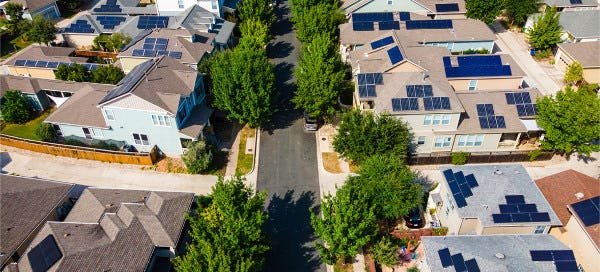As a Texas homeowner, one of the best home improvement investments you can choose is the addition of solar panels. Before you commit to going solar, knowing how to install solar panels can help you fully understand the process. But you'll soon see that it takes more than the solar panels and an online tutorial.
Unless you are an experienced electrician, you should hire a professional solar company to install solar panels at your home. Fortunately, reputable solar companies throughout Texas with years of experience are ready to take on your project.
Finding the best company to install solar panels at your home is essential. However, there are a few steps you need to complete before your solar energy system can be installed. Understanding the entire solar installation process will help you decide which company matches your needs.
This article will teach you what steps you should take to install solar panels at your home or business.
Before Getting Started
Before starting the solar installation process, there are a few factors to consider. These will influence the size and number of solar panels needed to power your home.
Power
How much power will you need in your home? The demand depends on what appliances will be powered by your solar energy. You can determine the amount of energy you need by reviewing your current monthly utility bills. Then you can make an educated decision on whether to offset some or all of your electrical costs by using solar power.
Sun Hours
Solar panels rely on the sun to generate power. Areas with more hours of sun will generate more energy with fewer panels. If your area experiences fewer hours of sun, you may need to install more panels to get the same amount of energy. It's helpful to know how many sun hours are available to design the most efficient solar energy system.
Your Home
The size and shape of your home directly influence the design of your solar power system. Houses with large roofs can handle many panels. However, smaller homes can have panels installed on the ground if there is ample ground space. The design of the roof will also determine whether your panels can be installed facing the direction of the sun.
Calculate
Calculating your energy needs will help you estimate the cost of your solar panel installation. You can do this by averaging the kWh number at the bottom of your electricity bill. Remember, though, that every season will require different energy usage. Ensure you can produce enough energy to manage the needs of your home.
You Must Pay Before You Save
There aren't many home improvement projects that will pay for themselves. Solar panels are an exception. They immediately increase the value of your home and begin saving you money. However, before you can truly reap the benefits of installing solar panels, you need to make a significant investment.
You can expect a solar panel system installation to cost around $25,000 before applicable tax incentives and savings. But don't let that number keep you from moving forward with solar. Numerous federal tax credits could significantly reduce the cost during the first year after installation. Additionally, your new solar energy could save you around $1,000 every year versus traditional electrical sources.
Save While Paying a Solar Loan
Another way to invest in solar panels is to use a loan. This is an affordable way to complete your solar project and begin saving. Several factors influence eligibility, but it's possible to get a loan that covers the entire cost of your system. You'll have low monthly payments and save on your energy bills. As you pay down your loan, your energy savings will increase!
Basic Steps for Solar Panel Installation
After installing a solar energy system, you become independent from traditional utility companies. Most of your electricity will be supplied by your solar equipment. You also get the added benefit of reducing your carbon footprint.
Before getting to the meat of solar panel installation, a few things need to be pointed out. For starters, the solar panel installation process is not a DIY project. You need a thorough knowledge of solar technology to ensure the panels are correctly designed and installed.
A professionally installed solar energy system will work more efficiently and save more than what you could save with a DIY installation.
Keep in mind that even if you choose the highest quality solar panels, installing them is a process that could take a few days. There are several key steps in the installation process to ensure your new electrical system will be a dependable and adequate renewable energy system.
An Engineer Completes a Survey of Your Home
After carefully selecting your solar installation company and signing a contract, an engineer will come to your home for an inspection. They will evaluate your existing electrical system to ensure it's compatible with the design of your solar panel system. The engineer may be an employee of the solar company or a subcontractor.
Depending on the age of your electrical system, the engineer may tell you that an upgrade or replacement is necessary to move forward with the solar panel installation. Outdated electrical systems may not handle the number of amps a solar energy system needs to operate.
After inspecting the electrical system, the engineer will evaluate your roof. The roof must be structurally sound to ensure it will support the weight of solar panels. They will also determine whether any special mounting system is required.
In some cases, your solar contractor may recommend choosing a backup option. Sometimes solar manufacturers may be out of stock or a particular product, delaying your project. You'll still make your selection based on efficiency, price, lifespan, and aesthetics. It will still meet your demands and goals, but your project can proceed as planned with a second choice.
Obtaining Permits
Before your solar panel project begins, you'll need to get a few things in order. Obtain necessary permits and additional documentation verifying your solar panel installation will meet all local safety and zoning requirements.
Many solar panel companies handle this step for you. In some cases, the only thing you'll need to do is sign a few papers. However, it's always a good idea to understand what's going on. Your solar installer will file the following documents:
Electrical and building permits required by your local government
Permission from your utility company to complete the installation
Applications for state and federal incentive programs
For homeowners, the last document may be of the most concern. This will secure any applicable rebates, tax credits, or other financial assistance that will help you pay for the installation.
This paperwork could take a few days for your solar installer to submit, plus the time it takes for the government to process it. It's good practice for you to follow up and request updates to ensure the process doesn't come to a halt.
Getting the Equipment
After the contractor receives the permits, they will be ready to order your solar equipment. By now, you'll have picked out the solar panels, batteries, and necessary inverters for your home. These are usually presented in a solar proposal reviewed before signing the contract.
Whether you've chosen the most efficient or most affordable solar panels, your solar contractor can help you choose the best equipment to meet your needs. After ordering the equipment, your home will be added to the solar installers' schedule to complete the installation after the panels have been delivered.
Before Installation Day
You can do a few things to help installation day run smoothly. Address any remaining questions and review your design. Any requests for changes to the design could alter your timeline and the overall cost.
If you are part of a Homeowner's Association (HOA), confirm the approval of the installation. You must pay any fees your HOA requires for the installation to be completed.
Clear the space around your electrical equipment and your driveway. You may need to trim a few trees to give your solar company a safe work area. Additionally, don't schedule any other work during your solar installation.
Solar Panel Installation Day
On the day of your scheduled installation, someone 18 years or older must be present on the first day. Plan to be without power for several hours, including any internet connection. You may need to make alternative arrangements for remote work during the installation.
Your solar installer will begin by preparing your roof. They'll verify that all tiles or shingles are secured and place the wiring to connect your solar system with the electrical system.
After placing the wire, your solar installer will place the racks that hold the solar panels. The panels are placed into the racks and the inverters are connected. If you've purchased a battery bank, your solar installer will complete the setup, too.
A frequently asked question is how long the installation process will take. Each homeowner will have a different experience because of their home's unique needs. Installation time depends on the size of your home and the extent of the installation. However, the average timeline is about three days from start to finish.
Approval and Connection
Once your new system is in place, the solar installer has one final step. They must turn it on. However, before you begin using your solar energy system, you'll likely need a government representative to evaluate and approve it. After it's been approved, they'll issue permission to operate (PTO).
This process allows another set of eyes to review the system and ensure the wiring and electrical work are safe to operate. A member from the local utility company will need to connect your system to the electrical grid. Once connected, you will draw traditional electricity for a backup as you need it.
This will also send surplus energy back to the grid, potentially giving you credit from your retail electric provider through solar buyback programs.
How Solar Panels Work
When your solar energy system is ready to operate, you'll finally be able to harness the sun's power. But you may be asking yourself how it works.
Once the solar panels are connected, they absorb the sun's energy. It generates DC electricity stored in a battery compatible with DC devices.
It is possible to power your home exclusively with AC electricity. The power generated by your solar panels can be converted directly or through the battery bank.
Roof Mounted Solar Panels
Now that you know the basic installation process, you may be interested in more details. For instance, how to install solar panels on your roof. It depends on the type of roof you have.
The solar panels get attached with a lag bold and flashing with asphalt shingles. Bolts are screwed into the rafters, and the flashing prevents water from infiltrating your roofing system. The solar panels are attached to brackets, where they'll stay for their entire lifespan.
Best Direction for Solar Panels
Your solar installer will ultimately decide the best position for your solar panels. However, traditionally they are positioned to face south. This is because the sun moves along the southern part of the sky in the Northern Hemisphere. Therefore, placing solar panels facing south allows them to capture the maximum sunlight.
Most solar installers also know what degree to tilt the panels. South-facing panels should be tilted between 30 and 40 degrees. This angle ensures that the sunlight hits the panels perpendicularly, producing the most energy.
Solar Panel Maintenance
Once the installation is complete, there aren't many costs associated with maintenance. However, you should inspect your panels regularly for dirt or other debris accumulated on top. Solar panels must remain clean so they can efficiently absorb the sun.
Before cleaning the panels, discuss with the solar installer what could void the warranty. Some manufacturers will terminate the coverage if the panels are not professionally cleaned. If this rule doesn't apply to your system, you can use a garden hose to rinse the face of the panels. This should be done once a day, but avoid using cold water if the panels are hot. It could damage them.
If the hose isn't enough to clean your panels, a sponge with soapy water may get the job done. You could also hire a professional cleaning company for more thorough cleanings.
Ask your solar installer about any specific maintenance requirements for your system. The installation company should inspect it approximately every four to six years to ensure it still functions properly.
Best Time for Solar Panel Installation
Although it seems like summer would be the best time for installing solar panels, winter is the optimal season. There is less demand for solar installation companies in the winter, so you're likely to save on installation costs.
You'll also get your scheduled installation sooner. Because of a decrease in demand, solar installers are more available during the cooler months. However, it still takes time to complete the process.
During the cooler seasons, you can beat the heat when you begin the process. Having your panels installed before the temperatures increase will provide you with additional savings.
Texas homeowners rely on their air conditioners a lot in the summer, causing their energy bills to soar. But when you have solar panels powering your AC unit, you'll save money while keeping your home cool.
If your roof and electricity use meet the requirements, you can get your solar panel installation process started. Contact a local solar company to begin learning about what they offer. After your home evaluation, you'll know whether your home is a candidate for renewable solar energy.
Increase Your Savings with Rhythm
Once your solar panels begin producing energy, you may find that you have more than you need. So what can you do with your extra renewable energy? Turn it into valuable credits on your next utility bill and help the community!
At Rhythm, we offer Texans another beneficial savings option to help pay for their solar panels. Our solar buyback plan lets you send your excess solar generation back to the grid and into your neighbors' homes. Then, on your monthly Rhythm bill, you'll see buyback credits! It may take two to three billing cycles, but you'll soon begin to see the savings pile up.
Contact us to learn more or to enroll in this valuable renewable energy buyback program. Get in the Rhythm today!




